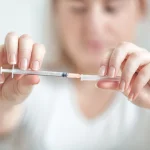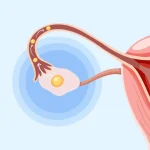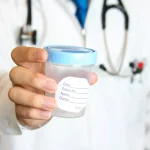What to Expect Day by Day After IVF Transfer
For couples and individuals going through IVF, the embryo transfer is often seen as the “big moment” — the point where all the injections, medications, and appointments finally lead to placing an embryo into the uterus. While this is indeed a major milestone, it’s not the end of the story. What happens after the transfer can be just as important, and it’s a period filled with both anticipation and anxiety.
The time between transfer and the first pregnancy test is commonly called the “two-week wait.” For many, it can feel like the longest wait of their lives. Every cramp, twinge, or sensation can raise questions: Did the transfer work? Is this a good sign? Understanding what actually happens in your body after the transfer — broken down day by day — can make the process more manageable and give you reassurance.
This guide explains what goes on biologically, what symptoms to expect, and how to emotionally cope with this critical phase of IVF.
Day 1–2: Embryo Evolution Begins

Once the embryo is transferred, it immediately begins adjusting to its new environment in the uterus. If a blastocyst-stage embryo was transferred (most common), it has already grown into a ball of about 100–200 cells.
During the first 24 to 48 hours, the embryo starts the process of “hatching” — breaking out of its outer shell (called the zona pellucida). This is a critical step that allows the embryo to attach to the uterine lining.
Most women feel very little at this stage. If you do notice mild cramping, bloating, or a little spotting, it’s usually due to the transfer procedure itself or ongoing hormonal support, not the embryo yet.
Day 3–4: Early Implantation Phase
By the third or fourth day, the embryo has usually finished hatching and begins the process of finding a place to implant. It starts connecting with the endometrium (the inner lining of the uterus), which has been prepared to receive it through hormone treatments.
Some women may experience implantation spotting at this stage. This is typically very light — just a few spots of pink or brown discharge — and it doesn’t happen to everyone. Others might feel mild cramping, which can also be a positive sign that the uterus is responding to the embryo.
It’s important to note that not having spotting or cramps doesn’t mean implantation isn’t happening. Many successful IVF patients report no symptoms at all during this phase.
Day 5–6: Implantation Takes Place
Days five and six are often the most critical in the entire process. This is when the embryo actually embeds itself into the uterine lining. Once this happens, the body begins producing human chorionic gonadotropin (hCG), the hormone that pregnancy tests detect.
At this point, you may start noticing subtle changes in your body. Some women report breast tenderness, fatigue, or bloating, though these symptoms may also come from progesterone supplements. Cramping may continue as the uterus adjusts to the implanted embryo.
If implantation doesn’t occur, the cycle may not succeed — but it’s far too early to know, and the absence of symptoms is not a reliable sign either way.
Day 7–8: hCG Levels Begin Rising
By the end of the first week post-transfer, if the embryo has successfully implanted, your body is now producing detectable levels of hCG. This hormone signals to your body to maintain the uterine lining and prevent menstruation.
Some women describe feeling like they’re about to get their period: cramping, mood swings, or bloating. Others start to feel “different,” with early pregnancy signs such as fatigue or increased appetite. But again, IVF medications like progesterone and estrogen can mimic many of these effects.
From a medical perspective, this is the first stage where a very sensitive blood test might be able to detect pregnancy, though most clinics still wait a few more days for accuracy.
Day 9–10: The First Signs of Pregnancy
By days nine and ten, hCG is usually at levels that can be reliably detected with a beta hCG blood test. Some home pregnancy tests may also pick up the hormone now, though false negatives are still common.
This is the point where many women start to feel stronger pregnancy-like symptoms: nausea, heightened sense of smell, sore breasts, or frequent urination. But it’s crucial not to rely on symptoms alone. Some women with no symptoms go on to have healthy pregnancies, while others with many symptoms may not.
Day 11–14: The Two-Week Wait Ends
By the eleventh day onward, most women can get accurate results from a home pregnancy test, though the “gold standard” remains the blood test your clinic schedules. By day fourteen, nearly all IVF patients will know whether the cycle was successful.
A positive test means implantation was successful and the embryo has begun developing normally. A negative test can be devastating, but it doesn’t mean the end of your journey. Many couples require multiple IVF cycles before achieving pregnancy, and your fertility specialist can adjust protocols or explore additional options.
Common Symptoms After IVF Transfer (and What They Mean)

Throughout the two-week wait, you may experience cramping, spotting, bloating, mood swings, or breast tenderness. While these can be hopeful signs, they’re also very common side effects of IVF medications.
The reality is that there’s no way to accurately interpret symptoms during this period. The only definitive answer comes from a pregnancy test. That’s why doctors often advise patients to resist testing too early and to be cautious about overanalyzing every sensation.
Emotional Impact of the Two-Week Wait
Beyond the biology, the hardest part of this period may be emotional, not physical. The two-week wait can feel like an emotional rollercoaster — one moment you’re optimistic, the next you’re preparing for disappointment.
Some strategies to cope include:
● Stay busy: Engage in hobbies, light exercise, or work projects to distract yourself.
● Practice mindfulness: Meditation, deep breathing, or gentle yoga can help calm anxiety.
● Limit internet searches: Googling every symptom usually increases stress rather than providing answers.
● Seek support: Talk openly with your partner, close friends, or a therapist. Online IVF support groups can also be helpful.
Remember, this stage is about giving your body and mind the best environment possible for implantation to succeed.
What to Expect if IVF Transfer Doesn’t Work
If your test comes back negative, it’s natural to feel discouraged. However, it’s important to know that many couples don’t succeed on the first try. Doctors often use information from one cycle — such as how embryos developed or how your body responded — to improve the chances in the next.
Your clinic may recommend additional testing, changes to your medication protocol, or different embryo transfer strategies. Some couples also consider genetic testing of embryos (PGT) to improve success rates.
Summary
So, what happens after IVF transfer day by day? The embryo goes through a predictable timeline: hatching, attaching, implanting, and producing hCG, while your body responds with subtle (and sometimes misleading) symptoms. By the end of the two-week wait, a blood test provides the answer you’ve been waiting for.
This phase can be emotionally intense, but understanding what’s happening inside your body can make it a little easier to manage. At The Bridge Clinic, we know how emotionally and physically demanding the IVF journey can be. Our experienced fertility specialists provide personalized care, advanced technology, and compassionate support at every stage — including the challenging two-week wait. If you’re considering IVF or want to learn more about the process, get in touch with us today to schedule a consultation. Together, we’ll help you take the next step toward building your family.
Follow us on our social media channels below:
Explore our related articles below:








